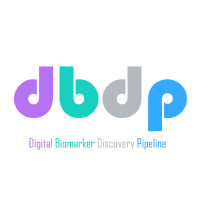6.0 KiB
Welcome to RAPIDS documentation
Reproducible Analysis Pipeline for Data Streams (RAPIDS) allows you to process smartphone and wearable data to extract and create behavioral features (a.k.a. digital biomarkers), visualize mobile sensor data, and structure your analysis into reproducible workflows.
RAPIDS is open source, documented, multi-platform, modular, tested, and reproducible. At the moment, we support data streams logged by smartphones, Fitbit wearables, and Empatica wearables (the latter in collaboration with the DBDP).
!!! tip "Where do I start?"
:material-power-standby: New to RAPIDS? Check our [Overview + FAQ](setup/overview/) and [minimal example](analysis/minimal)
:material-play-speed: [Install](setup/installation), [configure](setup/configuration), and [execute](setup/execution) RAPIDS to [extract](features/feature-introduction.md) and [plot](visualizations/data-quality-visualizations.md) behavioral features
:material-github: Bugs should be reported on [Github issues](https://github.com/carissalow/rapids/issues)
:fontawesome-solid-tasks: Questions, discussions, feature requests, and feedback can be posted on our [Github discussions](https://github.com/carissalow/rapids/discussions)
:material-twitter: Keep up to date with our [Twitter feed](https://twitter.com/RAPIDS_Science) or [Slack channel](http://awareframework.com:3000/)
:material-plus-network: Do you want to modify or add new functionality to RAPIDS? Check our [contributing guide](./contributing)
:fontawesome-solid-sync-alt: Are you upgrading from RAPIDS `0.4.x` or older? Follow this [guide](migrating-from-old-versions)
What are the benefits of using RAPIDS?
- Consistent analysis. Every participant sensor dataset is analyzed in the same way and isolated from each other.
- Efficient analysis. Every analysis step is executed only once. Whenever your data or configuration changes, only the affected files are updated.
- Parallel execution. Thanks to Snakemake, your analysis can be executed over multiple cores without changing your code.
- Code-free features. Extract any of the behavioral features offered by RAPIDS without writing any code.
- Extensible code. You can easily add your own data streams or behavioral features in R or Python, share them with the community, and keep authorship and citations.
- Time zone aware. Your data is adjusted to one or more time zones per participant.
- Flexible time segments. You can extract behavioral features on time windows of any length (e.g., 5 minutes, 3 hours, 2 days), on every day or particular days (e.g., weekends, Mondays, the 1st of each month, etc.), or around events of interest (e.g., surveys or clinical relapses).
- Tested code. We are continually adding tests to make sure our behavioral features are correct.
- Reproducible code. If you structure your analysis within RAPIDS, you can be sure your code will run in other computers as intended, thanks to R and Python virtual environments. You can share your analysis code along with your publications without any overhead.
- Private. All your data is processed locally.
Users and Contributors
??? quote "Community Contributors" Many thanks to the whole team and our community contributions:
- Agam Kumar (CMU)
- Yasaman S. Sefidgar (University of Washington)
- Joe Kim (Duke University)
- Brinnae Bent (Duke University)
- Stephen Price (CMU)
- Neil Singh (University of Virginia)
Many thanks to the researchers that made [their work](./citation) open source:
- Panda et al. [paper](https://pubmed.ncbi.nlm.nih.gov/31657854/)
- Stachl et al. [paper](https://www.pnas.org/content/117/30/17680)
- Doryab et al. [paper](https://arxiv.org/abs/1812.10394)
- Barnett et al. [paper](https://doi.org/10.1093/biostatistics/kxy059)
- Canzian et al. [paper](https://doi.org/10.1145/2750858.2805845)
??? quote "Publications using RAPIDS" - Predicting Symptoms of Depression and Anxiety Using Smartphone and Wearable Data link - Predicting Depression from Smartphone Behavioral Markers Using Machine Learning Methods, Hyperparameter Optimization, and Feature Importance Analysis: Exploratory Study link - Digital Biomarkers of Symptom Burden Self-Reported by Perioperative Patients Undergoing Pancreatic Surgery: Prospective Longitudinal Study link - An Automated Machine Learning Pipeline for Monitoring and Forecasting Mobile Health Data link - Mobile Footprinting: Linking Individual Distinctiveness in Mobility Patterns to Mood, Sleep, and Brain Functional Connectivity link









